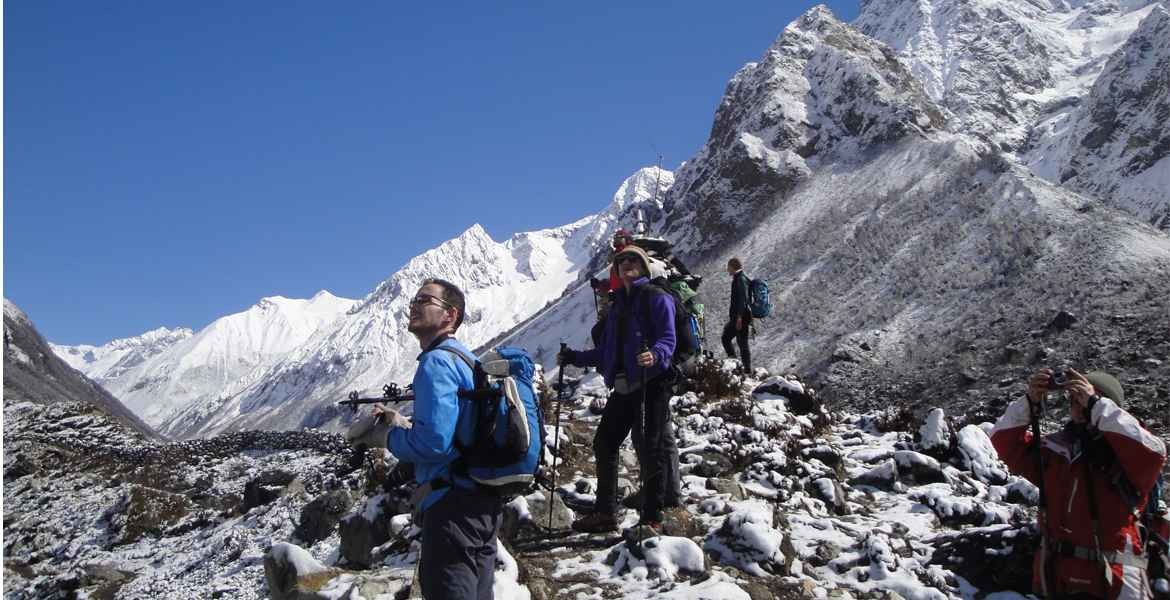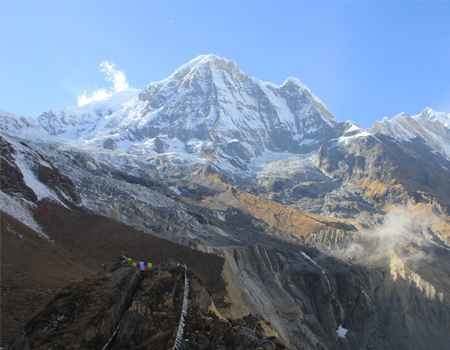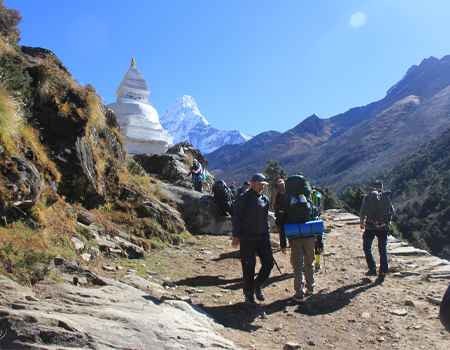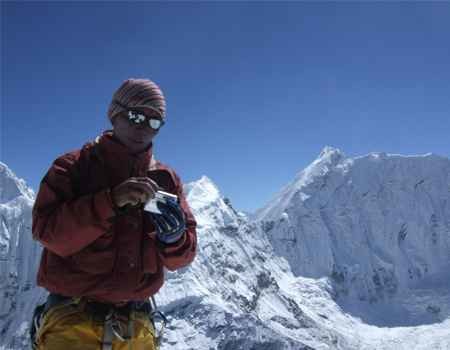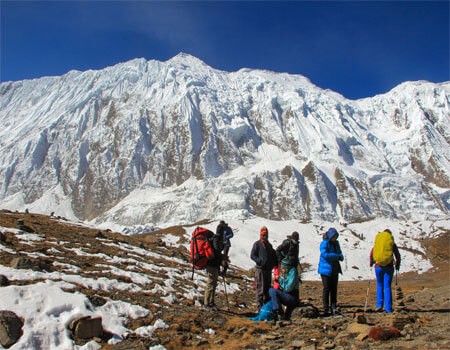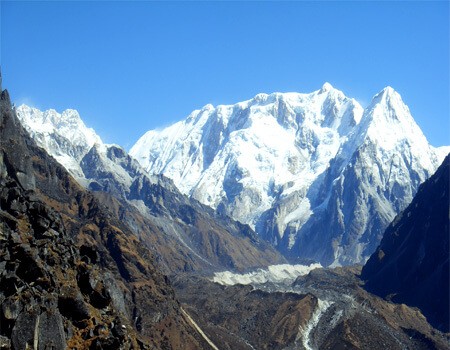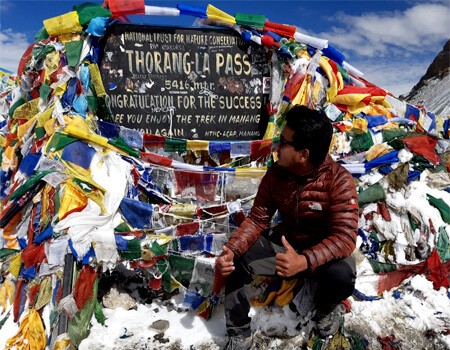You enter the wild heart of the Himalayas in Nepal, while trekking to Manaslu Circuit—untamed, breathtaking, and demanding at every turn. Here, impeccable preparation isn’t just thoughtful, it’s survival. With terrain that tests your endurance and weather as unpredictable as mountain moods, what you carry determines whether your journey becomes a cherished memory or a gritty trial.
Frolic Adventure’s suggestion on the packing list helps you for every challenge the Manaslu throws your way. Imagine: your perfectly-packed 40–60L backpack, each item purposefully chosen, ready for misty morning ascents, sudden downpours, sunlit ridges, and chilly tea house nights. Whether it’s securing that four-season sleeping bag for the high passes, double-layer gloves for frosty winds, or a simple headlamp for the midnight path—mastering your gear means unlocking the real adventure, from the steep climbs to the distant vistas and every wild step beyond.
Pack bright, trek bold, and let the Manaslu Circuit reveal its magic—one essential at a time.
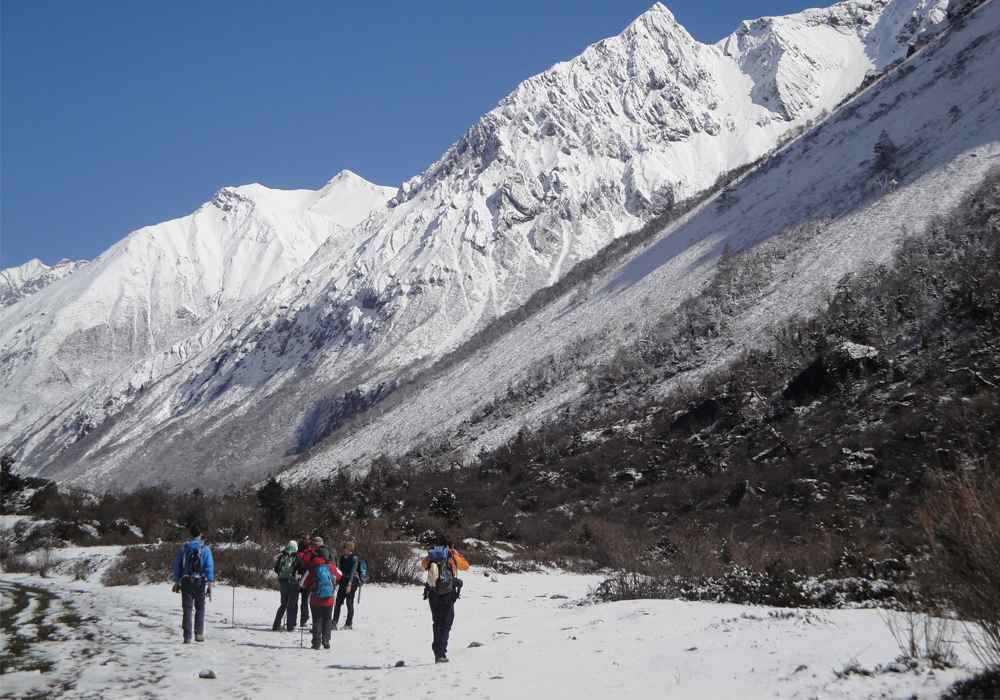
Trekkers are walking in the higher region of the Manaslu Circuit Trek
We operate daily treks to the Manaslu Circuit from Kathmandu. You can reserve your seat now!
The Manaslu Circuit Trek is a true Himalayan adventure in Nepal, which is untamed, breathtaking, and demanding of both body and spirit. Well-organized packing of equipment can make the difference between a trek you cherish and one you merely survive. Frolic Adventure has crafted this comprehensive gear list to guide you through the essentials and expert tips for every stage of your Manaslu journey.
Manaslu Circuit Trek Packing List
Preparing for the Manaslu Circuit means braving challenging terrain and unpredictable high-altitude weather and temperature. We have provided detailed information on the gear checklist for your comfort, safety, and performance in this blog post.
You might be interested in reserving your space for the Manaslu Circuit! We are here to lead you!
Trekking Gear for Manaslu Circuit
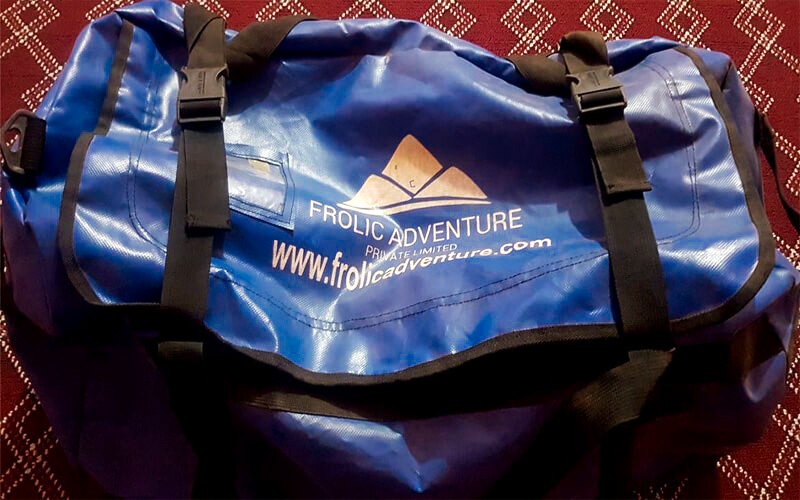
Main bag to pack trekking gear
Manaslu Trek is remote and less commercialized than the other familiar regions like Annapurna or Everest, so self-reliance is vital. The correct trekking gear ensures not only success but also your enjoyment of the adventure.
Essential Gear for Manaslu Trek
Before heading into specifics, let’s highlight the things that are must-haves:
- Sturdy and comfortable backpack
- Reliable sleeping system
- Multi-layer clothing for fluctuating temperatures
- Quality trekking boots
- Gear for rain, snow, and sun protection
- Navigation and safety devices
Backpack (40–60L)
Your backpack is your mobile home for two weeks. For the Manaslu Circuit, a 40–60L pack offers enough space without being burdensome. Look for:
- Supportive padding for hips and shoulders—essential for long days.
- Multiple compartments for organizing gear.
- A rain cover (never trust mountain weather!).
- Compression straps to stabilize your load.
Packing tip: Pack heavier items close to your back, with lighter gear at the bottom and top. Always pack rain protection near the top for quick access.
Note: We provide our clients with one company duffel bag each, with an extra 20 USD if you do not have one.
Daypack
A light (15–25L) daypack is a trekker’s best friend. Use it for your daily essentials—snacks, rain gear, camera, water, and warm layers. Opt for something with:
- Ergonomic shoulder straps
- A hydration bladder sleeve
- Extra pockets for quick access
If you have porters, this bag will remain with you while they carry your main pack.
Trekking Poles
Manaslu’s steep climbs, lengthy descents, and sometimes icy trails make trekking poles indispensable. Benefits include:
- Reducing strain on knees, especially during downgrades
- Providing balance on uneven, rocky terrain
- Adjustable poles pack down easily when not in use
- Invest in lightweight and sturdy models, ideally with adjustable lengths and ergonomic grips.
Down Jacket/Insulated Jacket
At high altitudes, temperatures plunge even in the peak trekking season. A quality down jacket (or synthetic insulated alternative) is crucial, especially above Samagaun and over Larkya La. Features to seek:
- Hooded design for maximum warmth
- Packable construction to squeeze into your bag
- Weather-resistant outer fabric
Fleece Jacket
A mid-layer fleece is ideal for cool mornings and evenings. It offers warmth without bulk and can be zipped up or down as your temperature changes. Choose a lightweight, quick-drying fleece rather than heavy versions.
Base Layers
Moisture-wicking base layers—top and bottom—are the foundation of Himalayan comfort. Look for merino wool or synthetic fabric. Carry at least:
- 2 upper body base layers (long sleeve)
- 2 pairs of base layer leggings
- Wear them at higher altitudes for insulation or at night in basic tea house accommodation.
Rain Jacket/Rain Cover
The Himalayas are notorious for spontaneous showers and snow. A durable, waterproof, and breathable shell jacket is essential. Make sure it:
- Has taped seams to prevent leaks
- It is lightweight for stowing away
- Offers a protective hood
- Pair this with a rain cover for your backpack.
Sleeping Bag (four-season recommended)
Many tea houses in Manaslu offer basic bedding. Still, a high-quality four-season sleeping bag is non-negotiable for warmth and hygiene. Look for:
- Temperature rating of at least -10°C (14°F) or lower
- Mummy shape for heat retention
- Stuff sack for minimizing pack size
- Add a silk liner for extra warmth and cleanliness.
Trekking Boots (waterproof, broken-in)
- Your boots form the literal foundation of your trek. Insist on:
- Waterproofing—streams, snow, and rain are inevitable
- Ankle support to prevent injuries on rough terrain
- A broken-in pair—never trek Manaslu in new boots!
- Also, pack extra laces and high-quality trekking socks.
Camp Shoes
After a long day, nothing beats pulling off those boots! Lightweight sandals or slip-on camp shoes let your feet breathe and are handy for nighttime toilet trips or exploring the tea house surroundings. Prioritize:
- Quick-drying, lightweight material
- Closed toes for warmth in cold areas
Gaiters
These simple accessories shield your lower legs and boots from mud, snow, and debris—common on Manaslu’s variable trails. Choose:
- Waterproof, breathable fabric
- Adjustable straps for a snug fit
- They’re lightweight but make a big difference in keeping feet dry and comfortable.
Headlamp/Flashlight
Electricity can be spotty or non-existent in remote tea houses and on the trail. A reliable headlamp is a must for early ascents, nighttime walks, and emergencies. Features to consider:
- Long battery life (spare batteries or rechargeable!)
- Multiple brightness settings
- Red-light mode for conserving night vision
Water Purification Tablets/Bottles
Water safety is non-negotiable on the Manaslu Circuit. Saves money and reduces plastic waste too! Options include:
- Chemical purification tablets (iodine or chlorine dioxide)
- SteriPEN or UV purifier
- Filtration bottles (LifeStraw, Sawyer Squeeze)
- Aim for 2–3L water capacity daily—hydration is key for acclimatization (2 bottles compulsory).
Quick-drying Clothing
Choose synthetic or merino clothing that dries fast. Avoid cotton, which traps moisture and chills quickly at altitude. Essentials:
- 2–3 pairs trekking pants/shorts
- 3–4 moisture-wicking shirts
- Lightweight trekking socks, at least 4–5 pairs
- Thermal Underwear/Leggings
- Essential for cold nights and the Larkya La crossing, thermal underwear (top and bottom) acts as an additional heat layer. Opt for:
- Merino wool for warmth, odor resistance, and comfort
- Synthetic options for affordability and quick-dry
Gloves (inner and outer)
- Protecting hands is vital up high. A double-layer glove system works best:
- Inner gloves for dexterity on mild days (thin fleece or merino)
- Outer insulated waterproof gloves for freezing, wet, or windy conditions
- Alternatively, mittens with liners offer extreme warmth.
Warm Hat/Cap/Buff/Neck Gaiter
- Your head loses heat fastest—protect it! Pack these:
- Warm hat for evenings and chilly starts
- Buff or neck gaiter for multi-purpose use (face mask against dust, neck warmth, sun shield)
- Cap with visor for sun protection at lower altitudes
Sunglasses & Sunblock
The Himalayan sun at high elevation can be brutal. Protect your skin and eyes with:
- Sunglasses with UV protection (wraparound or glacier glasses)
- High SPF sunblock (at least SPF 50)
- Lip balm with sunblock
- Also, consider zinc for extra sun-sensitive areas.
First Aid Kit/Medicines
Self-sufficiency is non-negotiable. Your kit should include:
- Blister plasters (Compeed/Moleskin)
- Painkillers and anti-inflammatory tablets
- Antiseptic cream and wound dressings
- Rehydration salts
- Personal medications, including high-altitude sickness medication (acetazolamide/Diamox)
- Anti-diarrheal tablets, antihistamines
Optional but helpful: insect repellent, eye drops, anti-nausea meds.
Toiletries & Hygiene Essentials
- Facilities are basic, so bring:
- Biodegradable soap/shampoo
- Wet wipes/baby wipes
- Toilet paper (carry enough—many tea houses don’t provide)
- Hand sanitizer
- Toothpaste, toothbrush
- Feminine hygiene products (carry in, carry out—be respectful!)
- Pack these in waterproof bags.
Travel Documents (MCAP/ACAP Permits, Passport)
- Valid passport (with extra copies)
- Manaslu Conservation Area Permit (MCAP)
- Annapurna Conservation Area Permit (ACAP)
- TIMS card (if required)
- Passport-sized photos for permits
- Emergency contact info
- Keep them safe and dry in a ziplock or waterproof travel pouch.
Cash (Nepalese Rupees)
There are no ATMs on the Manaslu Circuit after leaving Kathmandu or Pokhara. Plan:
- Estimate daily expenses (meals, accommodation, snacks, hot showers, charging, tips) - approximately 4000 NPR per day
- Keep notes small for convenience
- Stash cash in different places for security
- Cards or mobile payments are unreliable outside cities.
Electronics and Chargers
While it’s wise to keep electronics minimal, here’s what many trekkers find handy:
Smartphone for navigation/maps/offline entertainment
- Power bank (solar-powered banks recommended)
- Camera or action camera (plus spare batteries)
- Plug adaptor (Nepal uses Type C, D, and M sockets)
- Headphones for music or audiobooks
- Remember that charging in remote areas costs extra—conserve battery when possible.
Packing Tips for Altitude and Weather
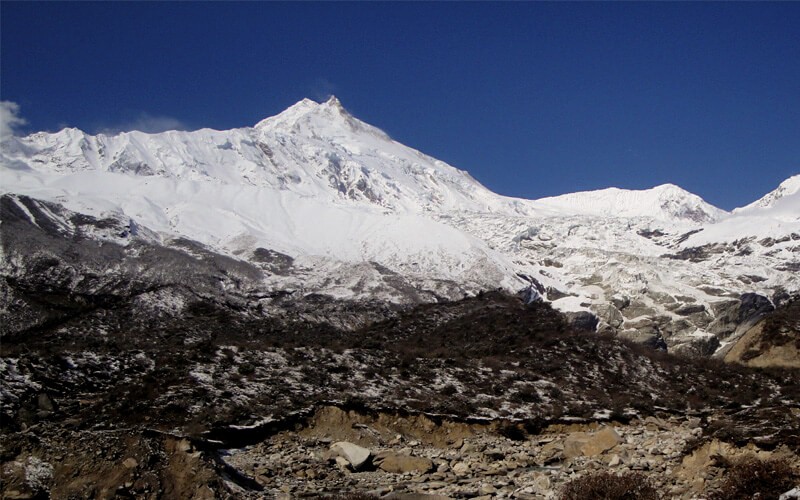
Mt. Manaslu
Manaslu’s high passes and fast-changing weather demand strategic packing:
- Layer, layer, layer: The key to mountain comfort is adaptable layering.
- Waterproof stuff sacks keep belongings dry.
- Bring plastic ziplock bags for separating dirty/wet clothing.
- Keep electronics down and in drybags.
- Don’t overpack—every extra kilo is a burden at 5,100m!
- Start with essentials, then add comfort items.
- Double-check: passport, permits, water purification, and first aid go in your daypack, never in checked-in luggage or with porters.
- Always leave room for snacks, souvenirs, or any gear you need to acquire along the way.
Conclusion
The Manaslu Circuit Trek is not just a challenging journey in Himalayan terrain. With well-chosen gear and careful preparation, even the harshest weather or toughest day becomes part of a story you’ll recall with pride and gratitude. As you shoulder your pack and set out beneath Himalayan skies, you can travel with confidence, knowing that you are equipped for both the expected and the unforeseen. Let your gear work silently in the background, so you’re free to savor every sunrise over remote valleys, every greeting in a mountain village, and every step that takes you deeper into the wild beauty of Manaslu. May your trek reward you with memories as vivid and enduring as the peaks themselves—and remind you that adventure truly belongs to the prepared. Safe journeys and happy trails!
Book your Manaslu Circuit Adventure now!

